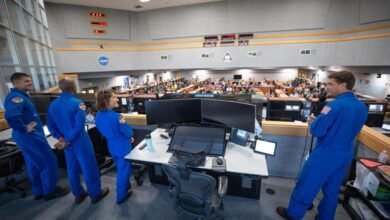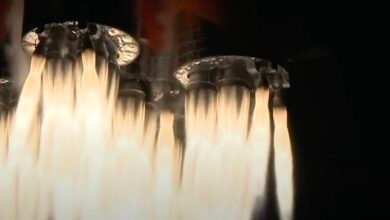Neutron’s Pad Opens, SpaceX’s Falcon 9 Cleared for Launch

▼ Summary
– Congress opposes the Trump administration’s plan to retire the Space Launch System rocket after Artemis III, preferring to keep it operational long-term.
– Israel successfully launched the Ofek 19 satellite, a synthetic aperture radar observation satellite, using its Shavit 2 rocket from Palmachim Airbase.
– Israel launches rockets westward over the Mediterranean Sea due to its geographic constraints and regional political challenges.
– Canadian company Reaction Dynamics secured $10 million in Series A funding to advance its hybrid propulsion system and plans a suborbital demonstration flight this winter.
– Reaction Dynamics invested $1.2 million in Maritime Launch Services to secure a launch site in Nova Scotia for its Aurora-8 rocket and support Spaceport Nova Scotia’s development.
The political landscape in Washington, D.C. took center stage this week, overshadowing launch pad activities as Congress pushed back against the Trump administration’s proposal to retire the Space Launch System rocket after the Artemis III mission. Lawmakers made it abundantly clear they intend to keep the heavy-lift vehicle operational for the long term, setting up a potential standoff with the White House over the future of NASA’s deep space exploration architecture.
Readers are encouraged to contribute updates, and those wishing to stay current can subscribe using the form below, please note it will not appear on AMP-enabled pages. Our coverage spans developments in small, medium, and heavy-lift launch vehicles, along with a preview of the next three scheduled launches.
In a significant milestone for national security space capabilities, Israel successfully orbited the Ofek 19 satellite on Tuesday. A collaborative effort between the Israel Ministry of Defense, the Israel Defense Forces, and Israel Aerospace Industries, the launch took place from Palmachim Airbase using the domestically developed Shavit 2 rocket. Ofek 19 is a synthetic aperture radar observation satellite boasting upgraded performance, as confirmed by local news sources.
This mission marked the seventh flight of the Shavit-2 launch vehicle, which first flew in June 2007. The most recent launch before this week occurred in March 2023. Due to Israel’s geographical constraints and regional political dynamics, the country conducts its launches westward over the Mediterranean Sea, a unique operational requirement that distinguishes its space access profile.
North of the border, Canadian launch provider Reaction Dynamics has made a strategic investment in launch infrastructure. After closing a $10 million Series A funding round earlier this summer, the Ontario-based company is directing part of those resources toward a launch site in Nova Scotia. The funding will also support continued development of its hybrid propulsion system, with a suborbital demonstration flight planned for the coming winter.
Reaction Dynamics is investing $1.2 million in Maritime Launch Services, the entity behind the developing Spaceport Nova Scotia. The company intends to launch its Aurora-8 rocket from this facility. According to CEO Bachar Elzein, the decision was driven by two key factors: securing a launch site for their inaugural orbital mission and supporting the foundational work Maritime Launch has undertaken to establish a spaceport from scratch. Elzein emphasized belief in the vision and the practical advantages of partnering with an organization that has already done the heavy lifting.
(Source: Ars Technica)






